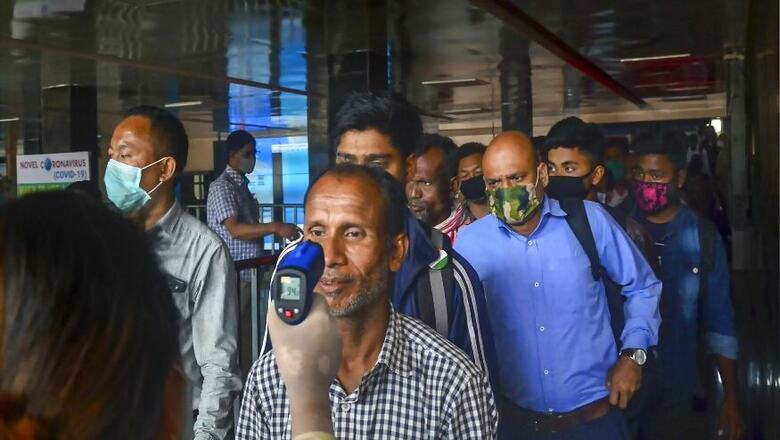
views
Dr VK Paul, head of the National Task Force on COVID-19, told CNN-News18 in an exclusive interview that facilities have been created but there is a communication gap at the delivery level. He says cases will increase in days to come and Indians continue to be susceptible.
Right now Mumbai and Delhi are in news for all the wrong reasons of hospitals getting overwhelmed. Is there mismanagement happening?
We are facing significant number of cases in some cities and this was accepted and we have to be ready to face such situations in other parts of the country as well. I think there is a need to ensure facilities earmarked should be made available. I believed we have enough facilities. The ease with which citizens can access facilities should be worked on. The interface with people is important. We have to have a proper functioning helpline and not one that gives the same answer to the people.
There is a communication gap that needs to be taken care of. And in some cities like Mumbai, the availability of beds and their distribution can be made visible through a dashboard.
So you are saying we have the facilities but there is a communication error, that state governments need to do much more to fill that gap?
This is a new situation that is changing. We are dealing with unprecedented times.
What are you expecting to be your biggest challenge in days to come?
The pandemic in our country is at a smaller level, the mortality rate is low. We are in a situation where there is a pandemic being managed but we continue to be susceptible. And different geographies can experience escalation of cases and we have to be ready as a society. No choice but to move together in unison.
The daily increase is touching 10,000. Is it expected ? Will it go up further?
It is expected. And we are a susceptible population. And if a large number of people have not got the infection as per our study done on April 30, which showed only 1% of the population surveyed at the infection. And infection will happen. And the pandemic in India is moving in different stages in different geographies. The disease is mild but we have a long way to go.
Is our mortality rate low because of a gap, hospitals are not checking if patients arriving dead have died because of COVID-19? Only those who are tested and succumbing to the infection are being counted?
The mortality rate is based on case identification. These mortalities need to be counted.
What if a patient is not even tested before he or she has died?
A patient should be tested if he or she falls in the criteria. Our testing criteria has widened.
How important is to test asymptomatic people?
Only high risk contacts of patients who are asymptomatic should be tested. We can’t waste resources on testing everyone. It is not needed.
Asymptomatic patients will also spread the infection.
That is right. Individuals may be asymptomatic and they are still speeding the infection. We are understanding how many people are there. They can spread the disease but compared to symptomatic they don’t spread the infection as much.
How big a challenge is it to manage the infection in rural India given that our migrants have gone back home? And how much has the infection spread in rural India?
The spread of infection due to migrants has not caused significant spikes, much less than what we feared. Also, migrants are younger people, so they were having milder infection. That is why it was managed. They were quarantined. The proportion of positives is not very high. It was varying. Most migrants had mild illness. The effort to contain must be mounted. In rural areas the population density is not much, so infection is manageable. Virus would spread to a less extent even if it has gone to rural areas.
But healthcare infrastructure is a challenge there.
During the lockdown we strengthened our facilities and that should come in handy.
When is the peak of the infection expected?
It is very tough to say. From original analysis the presumption was the society would not stop the virus and it would have a free march. There you can predict when the peak will come because progression of the virus is mathematical. But this country made huge efforts to make it difficult for the virus. Efforts will retard its spread. And this part of the equation is not measurable, that is why we can’t say when the peak will happen. The virus knows how to spread, but we have created a counter force.
Do you think Indians are more immune to the infection?
Difficult to say but as we proceed, we see our mild infection may have external factors like our immune status or BCG coverage. We have young people and we have a rural population where the spread will be slow. It depends on the virulence of the virus but I don’t have anything cogent to share now.
Will the virus be endemic? Will there be a COVID-19 season like dengue and malaria?
This cannot be ruled out. It's possible the virus may get endemic as little is known about it. We need to confine and frustrate the virus.




















Comments
0 comment